Tegeler Audio Manufaktur Crème Review – The Ultimate Mixbus Tool?
Could Tegeler have manufactured the ultimate mixbus tool? Mike Hillier skims the crème from the top… Price €1,699 Contact Tegeler Audio Manufaktur Crème key features: Two-band passive EQ VCA compressor Switchable sidechain filter All controls on switches or notched potentiometers There’s nothing quite like analogue mixbus processing to give you the edge when mixing. Whether […]
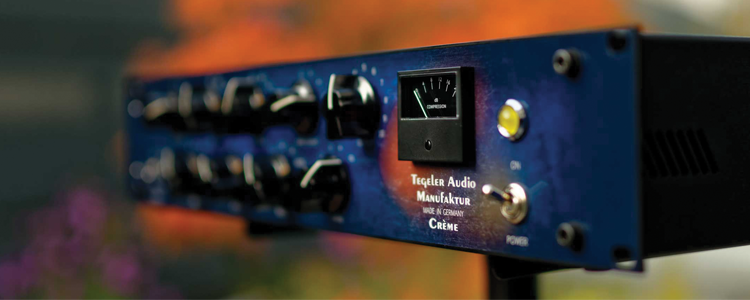
Could Tegeler have manufactured the ultimate mixbus tool? Mike Hillier skims the crème from the top…
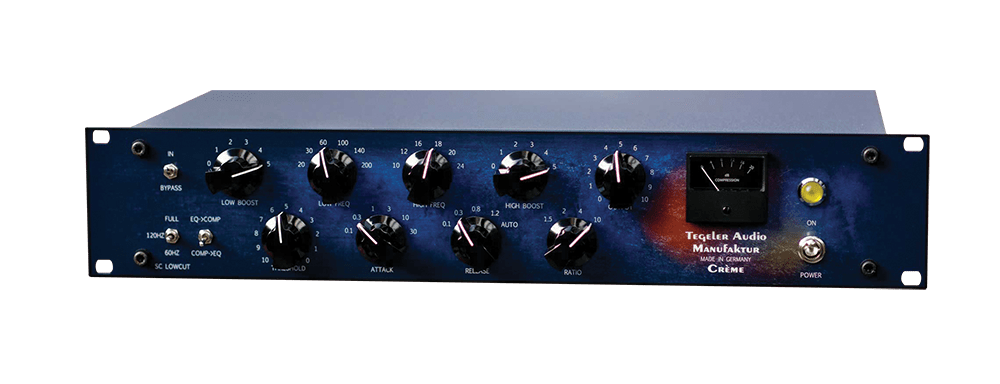

Price €1,699
Contact Tegeler Audio Manufaktur
Crème key features:
- Two-band passive EQ
- VCA compressor
- Switchable sidechain filter
- All controls on switches or notched potentiometers
There’s nothing quite like analogue mixbus processing to give you the edge when mixing. Whether it’s the exquisite shaping an EQ across the mix can bring, the steady glue of a compressor, or just the subtle saturation of analogue components, analogue processing can help to give your whole mix that pleasing sense of analogue mojo that is missing from so many modern mixes. By combining both a Pultec-style passive EQ, with a VCA compressor in a single 2U device, the Tegeler Crème is positioning itself as the perfect tool for mixbus processing.
Treasures abound
Most high-end audio equipment ships in large, well-lined cardboard boxes, with plenty of cut polystyrene holding it in place. The kind of thing you can quickly chuck out once you’ve racked the gear up, or store away if you think you might sell the device on in the near future. But none of this is good enough for Tegeler.
The Crème arrived packed inside a wooden chest. We wouldn’t have been surprised to have found a hoard of doubloons inside, replacing packing peanuts. Such is the unique beauty of the chest, that it would feel absurd to throw it out once the unit was racked up. It pretty much demands you find a use for it, even if it’s just as a store for cables, mics, or perhaps guitar pedals.
Once we’d got over the quality of the packaging, it was time to get excited about the product itself. We installed the Crème in our rack and set to work running mixes through it. As an initial test, we set the Crème up on an existing rock mix that already had our custom SSL-style compressor (one of many DIY compressors, based on the Gyraf Audio SSL 4000 compressor circuit) across the bus, and attempting to match the two compressors.
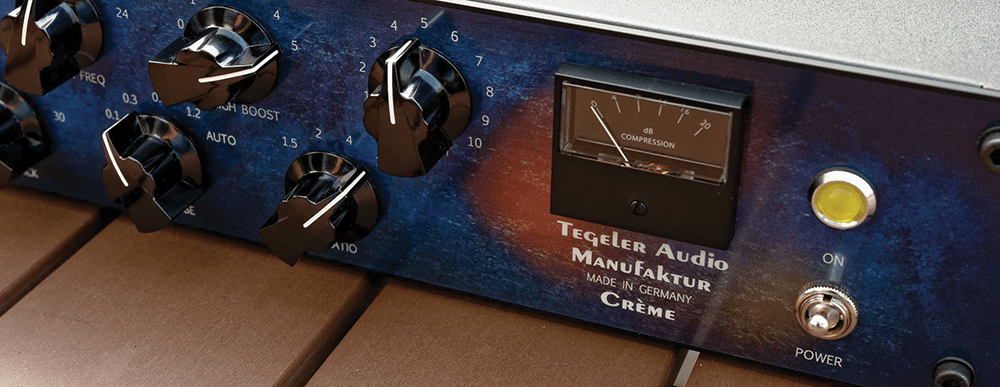
This proved remarkably simple. Both units have similar options for attack, release and ratio (the Crème has an additional 1.5 ratio that our compressor does not) and only really differ when it comes to the sidechain – the Crème only providing low-cut options at 60 and 120Hz, compared to the four high-pass filters and two shelving options on the GSSL bus compressor.
As we were using the 90Hz option initially, we opted to go with the 60Hz setting on the Crème and adjust the other to match it and then finally dialled in the threshold and make-up gain by ear, to get as close as we could to the same.
Comparing the two revealed a striking similarity. Neither unit colours the sound by very much, both pushing the midrange slightly and providing a similar sense of ‘glue’ to the overall mix. If anything, our SSL-style compressor was a little more aggressive with transients and more pronounced around the 800-1000Hz range, but there wasn’t much in it, and any difference could easily have been due to tiny differences in the amount of gain reduction taking place.
Overall, the Crème did sound a touch more hi-fi and less edgy. There’s a slight shrinking of the stereo image with both units, which helps to propel the track forward a little more, pushing the main, central parts – the kick, snare, bass and vocal – out, and giving the track a radio-ready vibe.
Switching the ratio down to 1.5:1 opens up a more subtle bus-compression option, which initially started to leave our mix sounding a little unfinished: parts that previously sat together well now either jumped out as too loud or got lost. But dialling up the amount of gain reduction at this new ratio with the threshold control started to ease the mix back into shape, although it still didn’t have quite the glue of the 2:1 ratio – but this is in a large part due to the track being mixed into the 2:1 ratio in the first place.
Ramping up to the 4:1 ratio had less of a dramatic impact on the mix. The overall tonality and shape of the mix held up well, and certain passages within the track even seemed to gel more, although the transitions from verse to chorus would need a little work to get them to sit evenly at this new ratio.
Transparent, mix-bus compression is just one of the tricks the Crème is capable of. With the ratio dialled up to 10:1 and the attack down to 0.1ms, the Crème produces some incredibly aggressive squash that makes for an excellent parallel drum chain, and that’s before we’ve even begun to explore the EQ side of the circuit.
Do I really need this?
Analogue processing patched across your mixbus can be an fantastic way of taking your mix outside of the box without having to invest piles of cash into a considerable amount of additional external hardware. By including both a passive ‘Pultec style’ EQ and a VCA ‘SSL style’ compressor, the Tegeler Crème gives you pretty much everything that you need across the mixbus in one excellent, extremely well-built package.
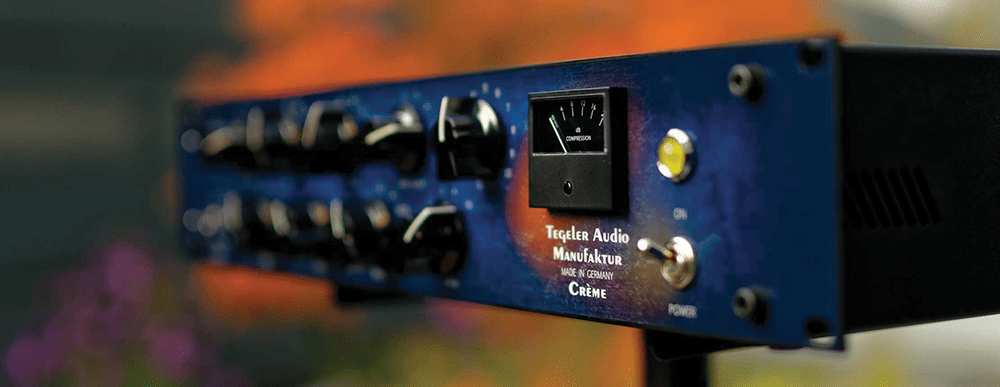
Rotary switches make recall easy and a digital recall plug-in sheet is also handy. And, it has to be said, we were very sold by the snazzy wooden case that it ships in, too!
Smile curves make everything better
The EQ on the Tegeler Crème is based on the principles of the Pultec passive equalisation circuit. The Crème has two EQ bands, a high- and low-shelf with fixed Q, and rotary switches for selecting the frequency. Each of the two bands only has the ability to boost by up to 5dB in 1dB steps. So if you’re looking for precision control of your mix shape, this isn’t going to cut the mustard. Instead, this is for adding a little tonal sweetening to your whole mix.
The low-shelf has settings for 20, 30, 60, 100, 140 and 200Hz and on our mix a boost of 3dB at 60Hz helped to really add a solid hefty dimension to the bottom of the bass guitar and the kick drum. At the top end, there are options for 10, 12, 16, 18, 20 and 24kHz. A subtle boost of 2dB at 12kHz brought a delicious airiness to the mix, while 10kHz brought out a little too much sizzle from the hi-hats.
Moving up through the options, you have to start dialling a little more gain in to get a noticeable effect, especially at 24kHz, as this is well outside the auditory range, but the shallow nature of the shelf means the effect can still be heard lower down. A boost of 4dB at 24kHz did bring out a wonderful quality in the vocal, which we couldn’t match with
lesser boosts at lower frequencies.
Perfect pair
The true test of a mixbus processor like this isn’t simply to try it out on new mixes though, and comes instead from starting a fresh mix, with the processor in place from the start. And this is exactly where the Crème shines. With the Crème across our master bus with EQ and compression in place, mixes started to come together quicker.
We usually engage the compressor as we’re building our static mix, dialling in the settings to match the track we’re working on as we go, but always with the compressor and EQ in place. With the Crème as our mixbus processor, it was as if some of the work for the mix was done before we even started. Once a basic starting point had been reached it was as if the next stage was already halfway done.
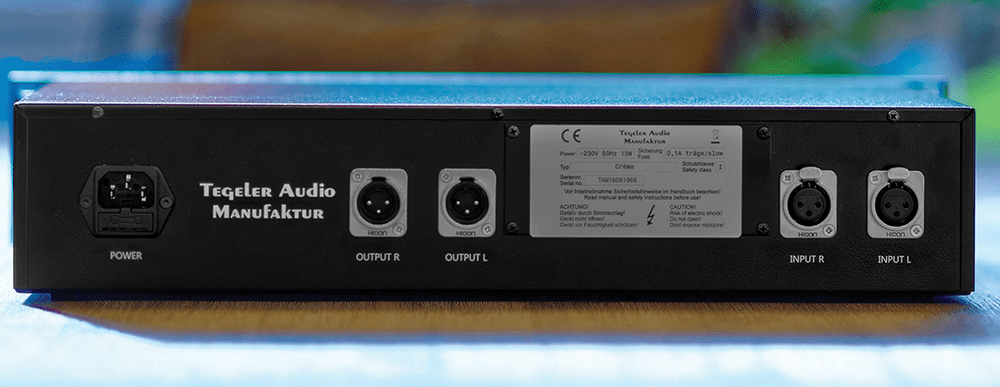
We have had similar reactions to other compressors. In fact, the reason our GSSL is so often across our mixbus from the start is exactly for this reason, but the addition of the Pultec EQ circuit and the option for a more subtle compression flavour at the 1.5:1 ratio means that our mix felt even further down the line this early on in the process, leaving us to concentrate on more pressing matters without having to worry about compressing a bunch of channels, or boosting the top-end or bottom end of a bunch of different instruments. Because we tend to mix with high- and low-pass filters on almost every channel, the boosts didn’t cause problems on channels we wouldn’t want lifting.
Used in this way, the Crème is a perfect companion for any studio, no matter how large or small, and because all the controls are on either rotary switches or notched potentiometers, recall is incredibly easy. There’s no need to worry about stereo matching, meaning this would also make a great mastering tool alongside a more fully-featured EQ. In fact, to make recall even simpler, Tegeler has released a free digital recall sheet plug-in, which can be downloaded from the website.

Dramastic Audio
Obsidian £2,999
One of the best VCA stereo bus compressors, this shares a number of features with the compressor sectionof the Crème, but adds Jensen transformer-coupled outputs and additional ratio settings, including the ‘skull and crossbones’ setting for aggressive smashing.
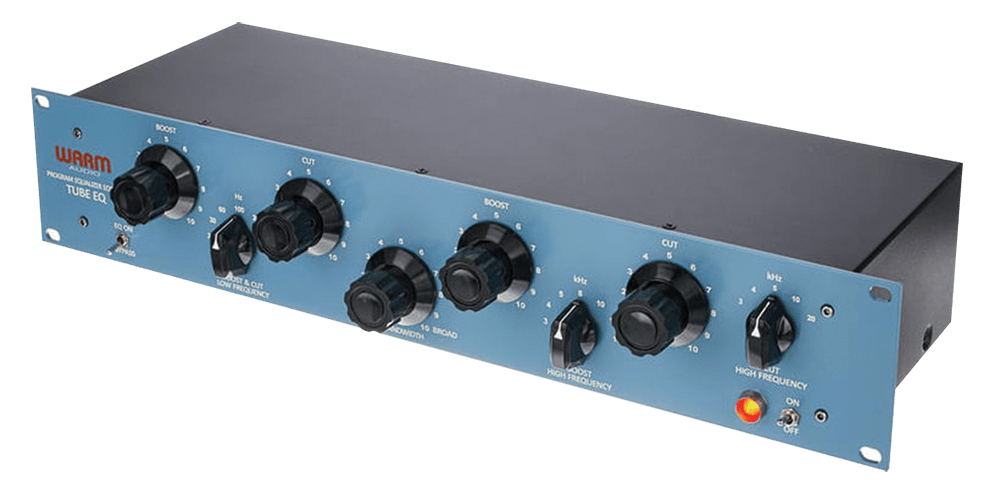
Warm Audio
EQP-WA £649
You’ll need two of these to duplicate the stereo functionality of the Crème EQ section, but if you do, you not only get the high- and low-boosts but also the option of variable Q, enabling you to do the ‘Pultec trick’ of boosting and cutting the low end at the same time.